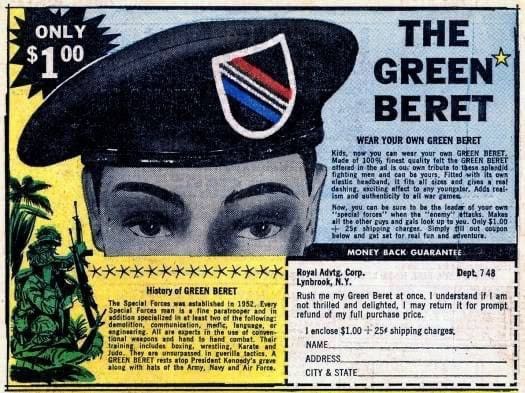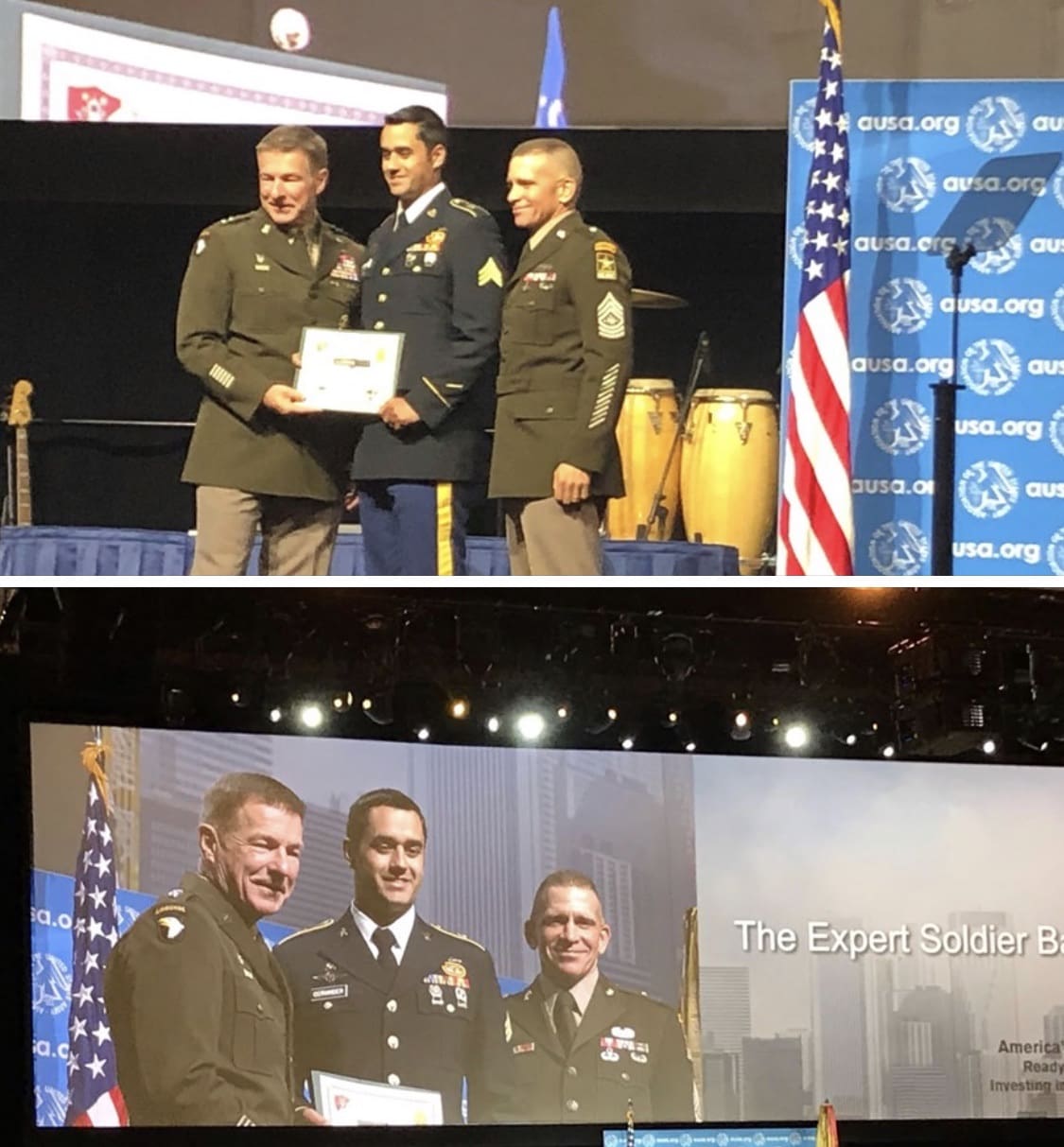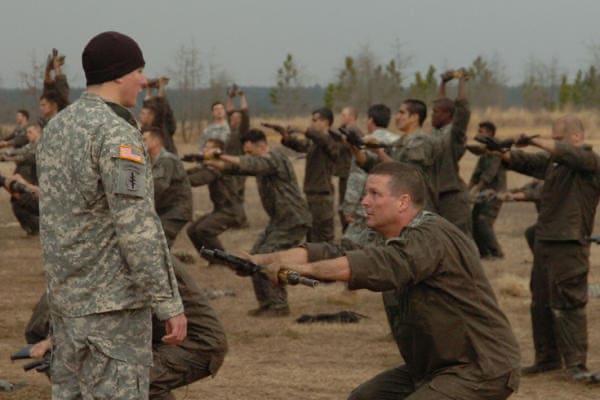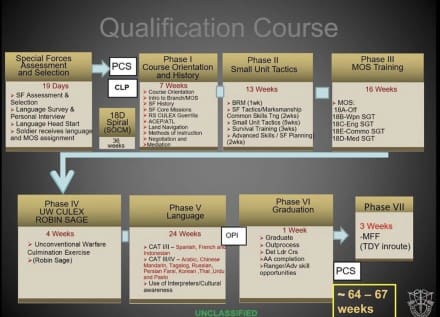
From the back of a comic book.

From the back of a comic book.
As of 6 a.m. Wednesday, a search remains underway for an Airman who exited a C-130 aircraft November 5, 2019 over the Gulf of Mexico approximately 4 miles south of Hurlburt Field. The incident is ongoing and under investigation.
Search and recovery crews were immediately called to aid in locating the Airman from the 24th Special Operations Wing at Hurlburt Field at approximately 11:30 a.m. Tuesday.
Units participating in the efforts include:
– 24th Special Operations Wing, Hurlburt Field Air Force Base
– 1st Special Operations Wing, Hurlburt Field Air Force Base
– Coast Guard Air Station New Orleans MH-65 Dolphin Helicopter aircrew
– Coast Guard Aviation Training Center Mobile HC-144 Ocean Sentry aircrew
– Coast Guard Aviation Training Center Mobile MH-60 Jayhawk aircrew
– Two Coast Guard Station Destin 45-foot Response Boat-Medium boat crews
– 96th Test Wing, Eglin Air Force Base
– U.S. Army 7th Special Forces Group, Duke Field
– Santa Rosa County Sheriff’s Office
– Florida Fish and Wildlife Conservation Commission
24th Special Operations Wing Public Affairs
Bottom Line Up Front: The Government Accounting Officer has sustained Leupold & Stevens’ protest against the U.S. Department of the Navy Surface Warfare Center Crane Division’s recent contract modification for Miniature Aiming Systems-Day Squad-Variable Power Scopes (Second Focal Plane).
Leupold has “won” but they didn’t get anything tangible from the protest. Unlike many other protests, they won’t be awarded anything. It’s more a moral victory.
On the other hand, Crane won’t be able to pay SIG SAUER for changes to the optics they’ve directed.
Other than withdrawing the contract modification, Crane has not announced a course of action to correct the situation. Possible outcomes are to purchase the optics with a different reticle, a new solicitation, no procurement at all, a new solicitation being issued. Alternatively, SIG may decide you eat the cost of the government directed changes.
Background
In August, optics manufacturer Leupold & Stevens submitted a GAO protest of the U.S. Department of the Navy Surface Warfare Center Crane Division’s recent contract modification published on 18 July 2019, to the internal reticle under Solicitation No. N00164-18-R-JQ30 (“the Solicitation”) and Contract No. N00164-18-D-JQ30 (“the Contract”) for Miniature Aiming Systems-Day Squad-Variable Power Scopes (Second Focal Plane) to Sig Sauer, Inc. For this solicitation, Crane was working on behalf of United States Special Operations Command as their office of primary responsibility for lethality. SOF weapons and accessories as well as Visual Augmentation Systems are procured by Crane.

Leupold asserted that Crane improperly modified its contract with Sig Sauer and that the changes made to the contract were so substantial that the contract should be terminated and a new competition conducted for the modified requirements. The additional funding of the contract modification is so much when added to SIG’s winning bid that Leupold feels someone else would have been awarded the contract instead of SIG.

While the SIG Optics TANGO6T is at the heart of this action, it’s important to point out that the protest has nothing to do with performance. That hasn’t even been actually assessed yet as neither SIG nor Nightforce have delivered any production samples to the government. This is because USSOCOM decided to integrate a new reticle into S-VPS, the Tremor8.
When the program was created, a different reticle had initially been considered, but due to the adoption of 6.5 Creedmoor, SOCOM decided they wanted a bullet drop compensator reticle. Todd Hodnett had envisioned a new Tremor reticle and this was adopted, but in concept only. The reticle was sketched out on a napkin and included settings for 5.56 M855A1 as well as the new 6.5 CM round. Even when the optics had been selected and contracts awarded, the Tremor8 still did not exist. Just recently, months later, the reticle has finally been certified. Now that it has been certified, Nightforce and SIG can integrate the reticle into their scopes and deliver samples to the government for acceptance testing.
In fact, Nightforce has already provided first production samples and they’ve passed Destructive Testing at Crane. They’ve completed the New Equipment Training and Operational Testing earlier this month and should have the Fielding & Deployment Release by early November.
SIG’s winning submission to S-VPS (SFP) incorporated a proprietary wire reticle. While this was selected, SOCOM later decided they wanted an etched, illuminated Tremor8 reticle. Naturally, this increased cost and the government paying for the additional cost of the integration of the Tremor8 into the SIG TANGO6T is what Leupold protested.

According to a pre-solicitation notice published yesterday by Naval Surface Warfare Center (NSWC) Crane, Knights Armament Company has offered to the Government an improved, capability upgrade to the upper receiver assembly for the M110K1 Semi-Automatic Sniper System (SASS). The new upper receiver is 6.5mm Creedmoor (versus 7.62mm, CLIN 0001 on current contract) and provides longer distance shots and increased range.
Naval Surface Warfare Center (NSWC) Crane has a requirement for M110K1 new upper receiver (6.5mm Creedmoor conversion kit) assembly (Technology Improvement). NSWC, Crane Division, Crane, IN intends to modify the existing sole-source, Firm-Fixed Price (FFP), Indefinite Delivery Indefinite Quantity (IDIQ) contract (N00164-18-D-JN50) for technology improvements with Knights Armament Company.
Last year, USSOCOM adopted the 6.5 Creedmoor caliber to replace certain uses of 7.62mm NATO.
Although SOCOM started fielding the M4A1 Carbine In 1994, 3rd SFG(A) went to Haiti with the M16A2 and didn’t receive ours until we returned to Ft Bragg in the spring of 95.
WASHINGTON, D.C. — To earn any coveted badge in the U.S. Army, be it the Expert Infantryman’s Badge (EIB) or Expert Field Medic Badge (EFMB), is to be among America’s most proficient Soldiers.

Sgt. Michael Ostrander, a small arms and towed artillery repairer assigned to 1st Special Forces Group, Joint Base Lewis-McChord, and native of Casnovia, Michigan, is one of the first Soldiers in the Army to earn the new Expert Soldier Badge (ESB).
“To hear that the ESB was actually going to be a thing, I was surprised,” Ostrander said. “Knowing I was one of the first Soldiers to earn it, I was excited to be a part of a great thing and honored to bring this great organization the credit it deserves,” he added.
Ostrander is one of the first 11 Soldiers to be awarded the ESB during the Association of the United States Army (AUSA) annual meeting, October 15, 2019, at the Walter E. Washington Convention Center in Washington, D.C.
The standards set to earn the Army’s new Expert Soldier Badge (ESB) are as challenging as the requirements to earn an EIB or EFMB.
Command Sgt. Maj. Edward W. Mitchell, senior enlisted leader at the Center for Initial Military Training, says like the EIB and EFMB, testing for the ESB consists of an Army Combat Fitness Test (ACFT), day and night land navigation, weapons, medical and more than 30 other individual tasks.
“We wanted every Soldier to make sure they understand that they are experts in their field,” Mitchell said. “Achieving the new badge … requires a much higher standard, just like its cousins, which are the EIB and the EFMB” Mitchell added.
Prior to the start of testing, participants underwent a week of intense training to prepare for the challenges they would face during the ESB qualification.
“There was a week of training before the week testing and it was pretty intense and there was also a big book of study material to go along with it,” Ostrander noted. “I learned a lot of medical stuff that I didn’t know before,” he added.
As with any competition, participants have one or more favorite parts.
“My favorite part of this was learning and solidifying the basic Soldier skills that I have forgotten or just never learned,” Ostrander said. “I learned that I’m a lot more capable than I thought.”
Since the ESB can be earned by any Soldier outside of the infantry, medical and special operations career fields, Ostrander suggests that Soldiers “brush up on things they’re rusty on” to be successful during testing.
-USASOC-
By SGT Larry Barnhill, USASOC Public Affairs

Although it has been reengineered many times over the past 60 years, the Army’s Special Forces Qualification Course, four components have remained constant. Some form of selection, whether pre-phase, SFOT or SFAS along with individual tactical skills, MOS specific training and collective team training culminating in an FTX, commonly referred to as “Robin Sage”. This is the current version of the Q Course.
